Q
Which one is faster, Sonata or Elantra?
When comparing the speed of the Hyundai Sonata and Elantra, it mainly depends on the specific models because there are significant performance differences among different versions. Take the high - performance versions currently available in Malaysia as an example: the Sonata N - Line (2.5T turbocharged, 290PS/422Nm) and the Elantra N - Line (1.6T turbocharged, 201PS/265Nm). The Sonata N - Line is significantly faster, with a 0 - 100km/h acceleration of about 6.0 seconds, while the Elantra N - Line takes around 7.5 seconds. However, if you compare the regular 1.6T Sonata (180PS/265Nm) with the 1.6T Elantra (201PS/265Nm), the Elantra is actually faster. This is because it has a lighter body and a more aggressive power tuning. If you prefer an ultimate driving experience, the Elantra N version (276PS) is more powerful than the standard N - Line. But the Sonata performs well in high - speed stability and luxury. In general, if you just compare acceleration, the high - performance Sonata N - Line is one of the fastest sedans in Hyundai's current lineup, while the Elantra N - Line is more suitable for owners who prefer nimble handling. These two cars are differently positioned, with one leaning towards a luxury GT style and the other towards a sporty hatchback style. It's recommended that you take a test drive before making a decision.
Special Disclaimer: This content is published by users and does not represent the views or position of PCauto.
Related Q&A
Q
What is the life expectancy of Hyundai Sonata Hybrid?
The service life of the Hyundai Sonata Hybrid can vary depending on multiple factors. Generally speaking, the battery of the Sonata Hybrid usually lasts about 5 years. As for other components, Hyundai offers a 5 - year or 300,000 - kilometer warranty for the whole vehicle, which reflects the expected durability of the vehicle under normal use conditions. The warranty periods for some core components, such as the power battery assembly, drive motor assembly, motor controller assembly, and vehicle controller assembly, are even longer, sometimes up to 8 years or 150,000 kilometers. Regular maintenance, good driving habits, and usage conditions all play important roles. If properly maintained, serviced on time, and driven carefully, this car has the potential to serve you for over 10 years and cover a mileage of as much as 200,000 kilometers or more.
Q
Which model of Hyundai Sonata is the most expensive ?
Currently, the most expensive model of Hyundai Sonata in Malaysia is the Sonata N-Line version, with an official price of approximately RM218,888 (excluding insurance). This high-performance version is equipped with a 2.5L Turbo GDi four-cylinder engine, capable of outputting 290 horsepower and 422 Nm of torque. Paired with an 8-speed wet dual-clutch transmission and front-wheel drive, it can accelerate from 0 - 100 km/h in just 6.2 seconds.
Compared with the standard Sonata (equipped with a 1.6L Turbo or 2.0L naturally aspirated engine), in addition to its powerful performance, the N-Line is equipped with a sport-tuned suspension, 19-inch wheels, an exclusive N Line exterior kit (including a more aggressive aerodynamic design and quad exhaust pipes), and an all-black interior with red stitching, giving it an overall sporty coupe style.
Although it's price is high, the N-Line version offers a comprehensive configurations, including the advanced Hyundai SmartSense active safety system (such as SCC Smart Cruise Control and FCA Forward Collision Warning), a panoramic sunroof, and a Bose sound system. It's a great choice for consumers who seek both performance and luxury.
Q
How about the speed performance of Hyundai Sonata?
The speed performance varies among different models of the Sonata. The top speed of the 2020 Hyundai Sonata 2.5 Premium can reach 210 km/h, while the top speeds of the 2017 Hyundai Sonata 2.0 Elegance and Hyundai Sonata 2.0 Executive are 200 km/h. These figures reflect the vehicle's potential in terms of power performance. However, in actual driving, it's difficult to reach the vehicle's top speed due to factors such as road conditions, traffic regulations, and driving behavior. For example, the speed limits on ordinary city roads are usually quite low. Although the speed limits on highways are relatively higher, it's not allowed to speed at will. It is recommended that everyone abide by the regulations while driving, reasonably control the speed according to the actual situation, and ensure driving safety.
Q
What's the engine displacement of Hyundai Sonata?
Different models of Sonata have various engine displacements. For example, the 2020 Hyundai Sonata 2.5 Premium is equipped with an engine with a displacement of 2497cc, which can provide ample power to meet the needs of daily driving and some driving scenarios with power requirements. As for the 2017 Hyundai Sonata 2.0 Elegance and Hyundai Sonata 2.0 Executive, their engines have a displacement of 1999cc. Relatively speaking, they may perform better in terms of fuel economy and can also provide stable power output for the vehicle. Engines with different displacements each have their own characteristics. Consumers can choose the model that suits them according to their own driving habits, such as the demand for power and considerations regarding fuel consumption.
Q
What's the service life of Hyundai Sonata's spark plugs?
The service life of the Hyundai Sonata's spark plugs depends on their types. The more affordable nickel alloy spark plugs typically last about 20,000 - 30,000 kilometers. Platinum spark plugs, with better heat and corrosion resistance, can be used for 60,000 - 80,000 kilometers. Iridium spark plugs, known for their high ignition performance, usually have a service life of 80,000 - 100,000 kilometers or even longer.
However, other factors can also have an impact. If the vehicle often drives under harsh conditions such as extreme temperatures, high humidity, and dusty areas, or experiences frequent starting and stopping, the spark plugs may wear out more quickly. Aggressive driving habits like rapid acceleration and hard braking can also increase the engine load and accelerate the aging of the spark plugs. Therefore, although the above are general reference standards, it's very important to regularly check the condition of the spark plugs and follow the vehicle maintenance manual for optimal performance.
Q
Does Hyundai Sonata have spark plug wires?
Yes, Hyundai Sonata is equipped with spark plugs, but it doesn't have the traditional externally exposed spark plug wires. Spark plugs are crucial components in the engine's ignition system, as they generate electric sparks to ignite the air - fuel mixture in the engine's combustion chamber, enabling the engine to operate properly.
With the development of modern automotive technology, many vehicles, including the Hyundai Sonata, have adopted the Distributorless Ignition System (DIS) or the Direct Ignition System (DI). In these systems, the ignition coils are directly installed on top of the spark plugs, providing high - voltage electricity directly to the spark plugs. They no longer rely on the traditional long spark plug wires to transmit high - voltage electricity.
This design reduces electromagnetic interference, improves ignition efficiency and engine performance, and also decreases the likelihood of spark plug wire failures, such as electrical leakage and aging. At the same time, it enhances the overall reliability of the vehicle and its fuel economy.
Q
How many cylinders does Hyundai Sonata have?
Whether it's the regular version or the N-Line version, the Sonata features a 4-cylinder (inline-four) engine layout, which is also a common engine configuration for mainstream mid-size sedans these days. This setup can not only deliver decent power output but also balance it with fuel efficiency. Hyundai has invested lot in developing turbocharged engine technology in recent years. For example, the SmartStream series of engines has optimized combustion efficiency and reduced emissions, enabling the four-cylinder engine to achieve performance comparable to that of a six-cylinder engine. If car owners prefer more potent power, they might need to consider higher-end rear-wheel-drive or all-wheel-drive performance cars. However, for general family use or mild sporty driving needs, the 1.6T or 2.5T four-cylinder engines are good enough for daily driving and highway cruising.
Q
How much does it cost to change Hyundai Sonata's spark plugs ?
The cost of replacing the spark plugs of Hyundai Sonata ranges from approximately RM200 to RM500, depending on the model year, engine type (1.6T or 2.5T), and the brand of spark plugs used (such as NGK, Denso, or original factory parts). A standard 1.6L Turbo engine usually uses iridium or platinum spark plugs, which cost around RM50 to RM150 each. On the other hand, the 2.5L Turbo engine (N - Line version) may require higher - performance spark plugs, which are slightly more expensive (around RM80 to RM200 each).
In addition, labor costs typically range from RM80 to RM150. Dealerships may charge more, providing factory - certified parts. Third - party repair shops offer lower prices, but you need to make sure the technicians perform well in the operation.
The spark plug replacement interval for the Hyundai Sonata is generally between 60,000 and 100,000 kilometers. However, if your vehicle experiences vibrations, has difficulty starting in cold weather, or shows an increase in fuel consumption, you may need to check the spark plugs earlier. It's recommended that owners have technicians inspect the spark plugs during regular maintenance and choose high - quality spark plugs that can withstand high temperatures and resist carbon deposits to ensure optimal engine combustion efficiency.
Q
How many spark plugs does Hyundai Sonata have?
Hyundai Sonata usually has four spark plugs. This is because most Sonata models are equipped with four-cylinder engines, and in gasoline engines, each cylinder is typically assigned one spark plug. Spark plugs play a crucial role in the operation of the engine. They are responsible for igniting the air-fuel mixture in the cylinders, enabling the engine to generate power. For example, the 2020 Hyundai Sonata 2.5 Premium and the 2017 Hyundai Sonata 2.0 Elegance/Executive models are both equipped with four-cylinder engines, and these models all have four spark plugs. Regularly inspecting and timely replacing the spark plugs according to the vehicle's maintenance schedule helps ensure smooth engine operation, good fuel efficiency, and reliable vehicle performance.
Q
How often should I change the spark plugs in my Hyundai Sonata?
The frequency of replacing the spark plugs in your Hyundai Sonata depends on the type of spark plugs installed. Nickel alloy spark plugs are affordable, but they have a short service life. You should consider replacing spark plugs when the vehicle has traveled about 20,000 - 30,000 kilometers. Platinum spark plugs are known for their good heat resistance and corrosion resistance and can be used for 60,000 - 80,000 kilometers. Iridium spark plugs have high ignition performance, and their service life is generally 80,000 - 100,000 kilometers or even longer.
In addition, the operating conditions of the vehicle also affects the service life of spark plugs. If you often drive in harsh environments such as extreme heat, humidity, and dust, or frequently start and stop the vehicle, or have a habit of aggressive driving, the spark plugs may wear out fast, and you may need to replace them early. Regularly refer to the vehicle's owner's manual, as it may provide more specific guidance for your Sonata model.
Latest Q&A
Q
Is the Nissan Sunny a safe car?
As an economy car, the Nissan Sunny mainly meets the daily commuting needs in the Malaysian market. Its safety performance meets the mainstream standards of vehicles in this segment. The base model is equipped with passive safety features such as ABS+EBD and dual airbags, while the high - end version may add advanced functions like the vehicle stability system. However, it should be noted that its overall safety rating does not reach the top level of some models at the same price range. This is related to the product positioning of this model, which focuses more on fuel economy and cost control.
For Malaysian consumers, if they have higher requirements for safety performance, they can pay attention to new cars launched in recent years that are equipped with intelligent safety technologies such as pre - collision systems and lane - keeping. It is also recommended to check the latest ASEAN NCAP test reports before buying a car and actually experience the performance of safety functions like the active braking system of the vehicle. In addition, no matter what type of vehicle you drive, maintaining defensive driving habits and regularly checking key components such as tires and brakes are important steps to ensure driving safety.
Q
Is the Nissan Sunny spacious?
As an economy sedan, the Nissan Sunny can meet the daily needs of most Malaysian families in terms of space. Its body length is about 4.5 meters and the wheelbase is close to 2.6 meters. The rear - legroom is quite generous for adults of medium build. However, it may feel a bit cramped when three adults are sitting in the back. The trunk volume is about 490 liters, which is sufficient for carrying luggage during daily shopping or short - distance trips.
For consumers who are looking for more space, they can consider models in the same class, such as the Toyota Vios or the Honda City. These models have a slight edge in wheelbase and storage design. Nevertheless, with its high cost - performance ratio and reliable fuel economy, the Nissan Sunny remains a good choice for families on a tight budget.
In Malaysia's hot climate, it is recommended to choose a version equipped with rear air vents to enhance the riding comfort. Meanwhile, regular maintenance of the air - conditioning system can ensure good air circulation inside the car.
Overall, the space performance of the Nissan Sunny is above average among cars in the same class, making it suitable for small families or urban commuting.
Q
How many seater is the Nissan Sunny?
The Nissan Sunny is a classic compact sedan. In the Malaysian market, it usually comes with a 5-seater configuration, making it suitable for daily family use or urban commuting. Its seat layout is a 2+3 design, with two people able to sit in the front row and three passengers in the back row. However, the legroom in the middle seat of the back row is relatively limited, making it more suitable for short trips.
This car is well - known for its economy and practicality. It has good fuel consumption performance and low maintenance costs, which makes it very popular among budget - conscious buyers, especially for the urban road conditions in Malaysia. Among cars in the same class, the Sunny's air - conditioning system is optimized for the tropical climate and has excellent cooling effects. Its trunk has a capacity of about 490 liters, which can meet the storage needs of an average family.
It should be noted that there may be slight differences in seat materials and comfort among models of different years. It is recommended to take a test drive before buying. In the Malaysian market, cars with a similar positioning include the Toyota Vios and the Honda City. Consumers can make a choice based on their personal preferences and budgets.
Q
Which country made Nissan Sunny?
The Nissan Sunny is made in Japan. As a well - known Japanese automobile manufacturer, Nissan has seen this car go through multiple upgrades and replacements since the launch of the first - generation Nissan Sunny in 1966. It has achieved good results in the global market, with a global production volume of over 16 million units. It is developed based on Nissan's V platform and is positioned as a series of compact family cars. It is popular among consumers due to features such as spacious interior space and excellent fuel economy. Although there may be local production and adaptive improvements in different regions, it essentially stems from Japanese automobile design and manufacturing technology. Later, there was also local assembly in some markets. For example, there was a version assembled by Dongfeng in China, and some Sunny models in the US market were produced in Mexico.
Q
What is the maximum speed of a Nissan Sunny?
The official hasn't specified the exact maximum speed of the Nissan Sunny. The actual maximum speed the vehicle can reach is comprehensively influenced by various factors. For example, whether the road conditions are flat and spacious matters. The vehicle's load also plays a role. The more passengers and cargo it carries, the more limited the speed might be. The wind direction and speed also have a certain impact. Driving against the wind will increase resistance. Meanwhile, the maximum speed achieved by drivers with different driving habits also varies.
Although there's no direct data on the maximum speed, from the vehicle's configuration, it's equipped with a 1.6L engine with a maximum horsepower of 120PS. Based on actual driving scenarios, it's speculated that under ideal conditions, the maximum speed can reach around 180 km/h. However, this is just a speculation. It's not recommended to try the extreme speed during actual driving. Safe driving is the most important thing.
View MoreRelated News

Hyundai's Big Return to Malaysia: Top 5 Models Expected
MichaelMay 30, 2025
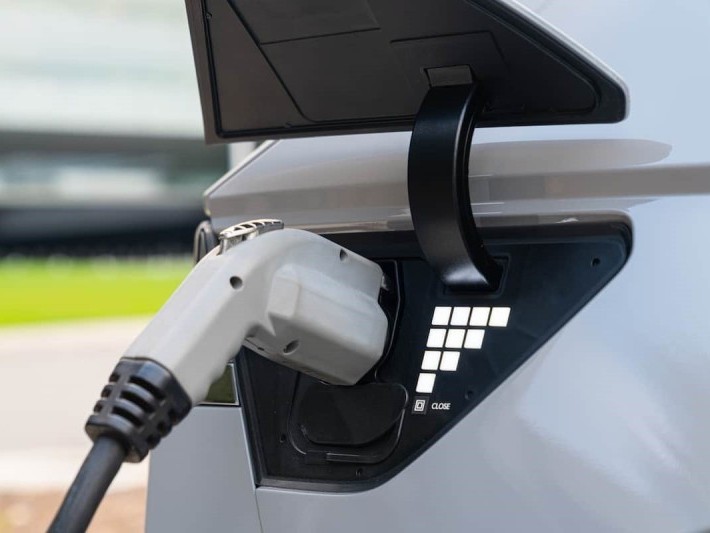
580,000 km & 87.7% Battery Health: Ioniq 5’s Incredible Durability
MichaelMay 6, 2025

Revolutionizing Hybrids: Hyundai’s New System vs. Toyota's Hybrid System
Kevin WongApr 22, 2025
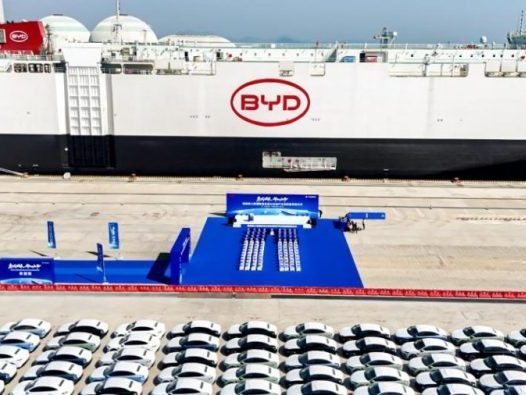
BYD Sets Global Sales Target of 5.5 Million Units for 2025
RobertMar 26, 2025
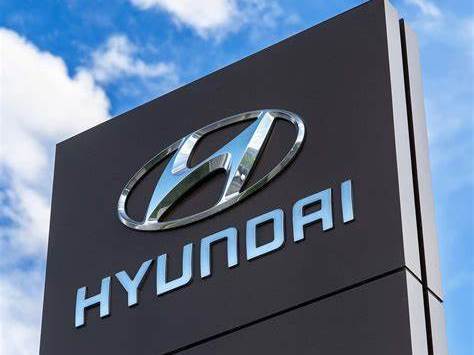
Hyundai is to launch an all-solid-state EV battery production line, but who's leading?
MichaelFeb 12, 2025
View More





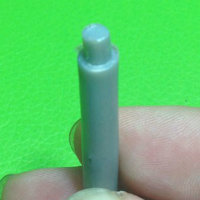





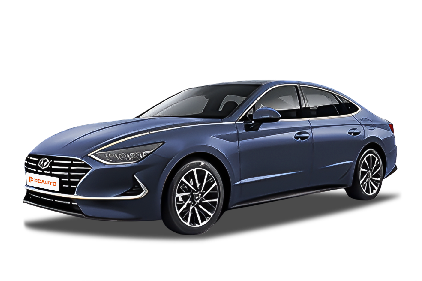



Pros
Cons